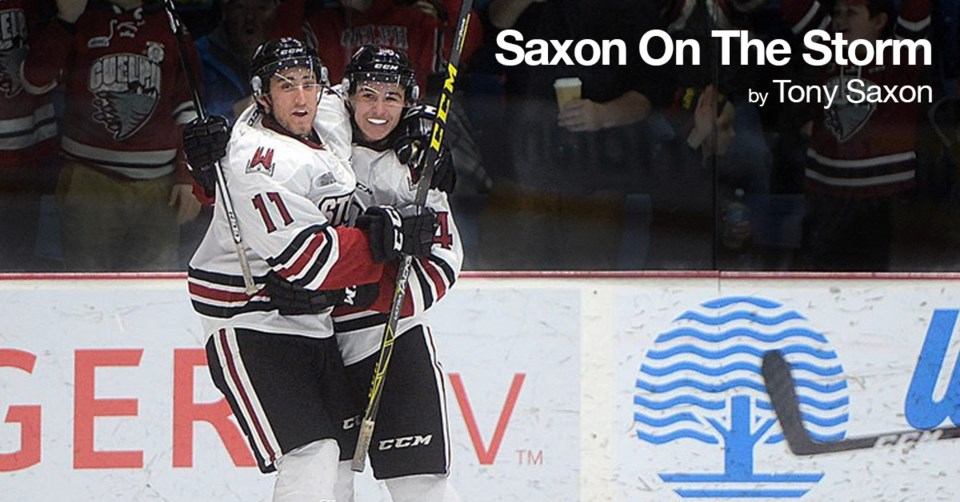It’s “The Code.” And it’s ridiculous.
On Tuesday night Kitchener Rangers defenceman Connor Hall delivered a big body check on the Guelph Storm’s James McEwan just inside the Kitchener blue line. McEwan went down hard, but it was a legal hit. And McEwan wasn’t hurt.
It wasn’t a dirty play. Hall did not take a run at McEwan and it wasn’t premeditated or gratuitous. He just delivered a body check that was perfectly within the rules of the game, encouraged by the rules of the game. He was doing his job.
Then “The Code” kicked in, as at least three players proceeded to chase Hall across the ice trying to get him to fight, to “answer” for the hit.
The Storm players chasing Hall can’t be blamed. They are “supposed” to stand up for their teammate. Had they not, they might have been the object of criticism in some hockey circles, perhaps even their own dressing room.
Don’t get me wrong, I understand the argument that standing up for a teammate, or that if a hit is dirty or gratuitous then a physical response from a teammate to hold the offender accountable falls within, to some degree (and right or wrong), the culture of the sport. Even that a physical response to illegal hits helps keep order.
Not sure I completely agree with the argument that violence solves violence, but I will at least agree that in those cases, there is room for debate.
But more and more we are seeing players expected to fight after delivering clean, hard body checks. See one delivered and it’s almost second nature to look to the side and see who is flying in with the gloves already off.
Hall is no shrinking violet. He’s had four fights in his one year-plus in the OHL and had 111 penalty minutes his final year of junior B hockey. At 6’2” and 190 pounds, he can handle himself.
But in this case, he shouldn’t have to.
How contradictory is it that a player is expected to fight because he played the game the way the rules say it should be played? That he should be expected to fight for abiding by the rules?
It is happening more and more. In fact it happened days before in Owen Sound, when Givani Smith hit Owen Sound defenceman Santino Centorame with a clean hit, then quickly turned around to fight an incoming Jacob Friend. Only difference there was that Smith was willing to fight. But he shouldn’t have had to.
My indoctrination into the sport of hockey came in the late 1970s. Fresh off the boat from England I quickly became a diehard Toronto Maple Leafs fan and one of my favourite players was Brian Glennie.
Glennie was an earnest yet unspectacular defenceman whose claim to fame were majestic hip checks that would often send opposing forwards ass over tea kettle before they crashed to the ice.
They were legal yet spectacularly destructive hits that would get a huge reaction from the crowd. And I don’t ever recall Glennie having to fight immediately after one of them.
When did this happen? When did “The Code” of jumping in to fight a player who just delivered big clean hits become the norm?
As with many of hockey’s more sour elements, it has become entrenched in the culture of the sport. And changing attitudes is a process, not a event.
The OHL has come a long way in reducing fighting in the sport to a fraction of what it once was. Perhaps this is another aspect that needs closer attention.
